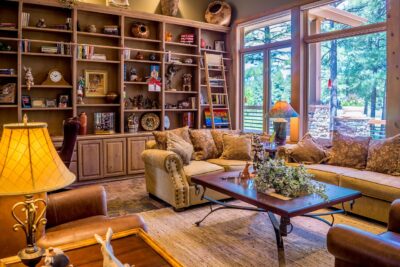
How to Retrofit Old LED Fixtures with Modern Covers
How to Retrofit Old LED Fixtures with Modern Covers By Aman | Updated on April 15th 2025 LED lighting has pretty much taken over the
Home » How Light Covers Contribute to a Healthy Workspace
Creating a healthy workspace is crucial for fostering employee well-being and productivity. Lighting plays a significant role in this, as poor lighting can lead to discomfort, reduced focus, and even long-term health issues. Ergonomic lighting, which adapts to the needs of workers, ensures a comfortable and efficient environment. Light covers, or diffusers, are integral to achieving ergonomic lighting by reducing glare, distributing light evenly, and enhancing the overall visual experience in the workplace. This article explores the role of light covers in creating a healthier workspace and their benefits for employees and employers alike.
Light covers are accessories designed to diffuse and soften light emitted from a source. By controlling the intensity and spread of light, these covers help create an evenly illuminated environment. They are essential for reducing glare, preventing harsh shadows, and improving the aesthetic quality of lighting.
Harsh lighting can lead to eye strain, headaches, and fatigue. Light covers diffuse light to create a softer, more comfortable visual experience, reducing the risk of these issues.
Modern light covers enhance the visual appeal of workspaces by offering sleek and professional designs that complement interior decor. They contribute to creating an inviting and motivating atmosphere.
By optimizing light distribution, light covers reduce the need for additional fixtures, leading to energy savings. They allow for better utilization of existing lighting, cutting down on electricity costs.
Proper office lighting with light covers eliminates distractions caused by glare or shadows, enabling employees to maintain focus and work efficiently.
Start by evaluating the current lighting setup to identify areas with excessive glare, dark spots, or overly bright zones. This assessment helps pinpoint where light covers are needed most.
Choose light covers that suit the specific needs of your workspace. For instance:
Combine artificial lighting with natural light to create a balanced lighting environment. Use light covers to manage the intensity of natural light and minimize glare from windows.
Identify problem areas where lighting needs improvement, such as workstations with direct exposure to harsh light.
Match light covers to the type of fixtures and the desired lighting effect. For example, wrap-around covers are ideal for fluorescent lights, while frosted glass works well for overhead fixtures.
Clean and maintain light covers regularly to ensure they function effectively. Dust and dirt can reduce their ability to diffuse light and may lead to uneven illumination.
Advancements in materials are leading to more efficient and eco-friendly light covers. These materials enhance light diffusion while reducing energy consumption.
The integration of smart diffusers allows for adjustable lighting levels, adapting to the needs of different tasks and times of day. These systems promote dynamic work environments.
Future developments may include customizable light covers designed to cater to specific industries, such as healthcare and creative studios, ensuring optimal lighting conditions for diverse workspaces.
Healthy workspace lighting is a cornerstone of employee well-being and productivity. Light covers play a vital role in achieving ergonomic lighting by reducing glare, distributing light evenly, and enhancing visual comfort. Investing in high-quality light covers, such as those provided by Fluorolite Plastics, can transform any workspace into a more inviting and efficient environment. Employers who prioritize proper office lighting not only foster healthier workspaces but also improve overall business performance.
Light covers scatter light evenly, preventing direct exposure to harsh light sources. This reduces glare and minimizes eye strain, enhancing visual comfort.
Yes, light covers optimize light distribution, reducing the need for additional fixtures and lowering energy consumption.
Plastic diffusers and frosted glass are ideal for ergonomic lighting, as they diffuse light evenly and reduce harsh shadows.
Light covers should be cleaned every few months to prevent dust buildup and ensure effective light diffusion.
Yes, many manufacturers, such as Fluorolite Plastics, offer eco-friendly light covers made from sustainable materials. These options provide efficient lighting solutions while reducing environmental impact.

How to Retrofit Old LED Fixtures with Modern Covers By Aman | Updated on April 15th 2025 LED lighting has pretty much taken over the

How to Prevent Yellowing and Cracks in LED Fixture Lenses By Aman | Updated on April 15th 2025 You’ve probably seen it before—those once-clear LED

How to Choose LED Fixture Lenses for Harsh Industrial Environments By Aman | Updated on April 8th 2025 Ever stepped into a factory or a
"We've Got You Covered" and Trace n'Fax are Registered Trademarks of Fluorolite Plastics, LLC. © 2011-2024 All rights reserved Fluorolite Plastics